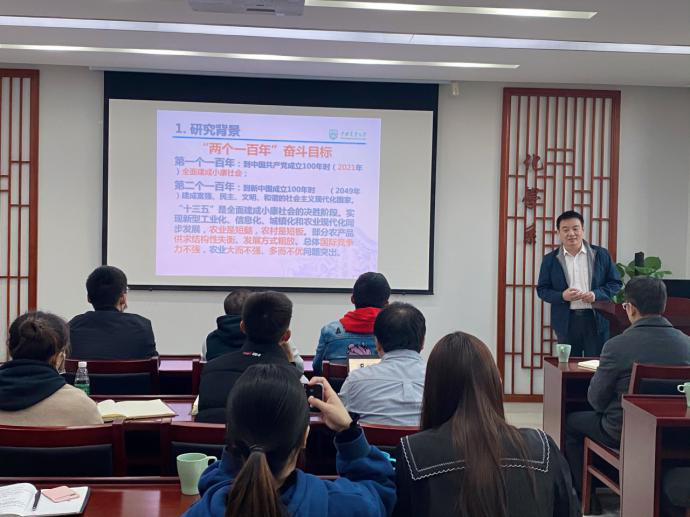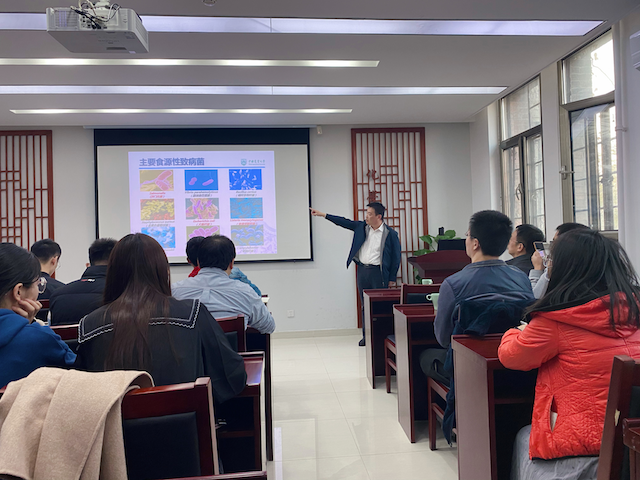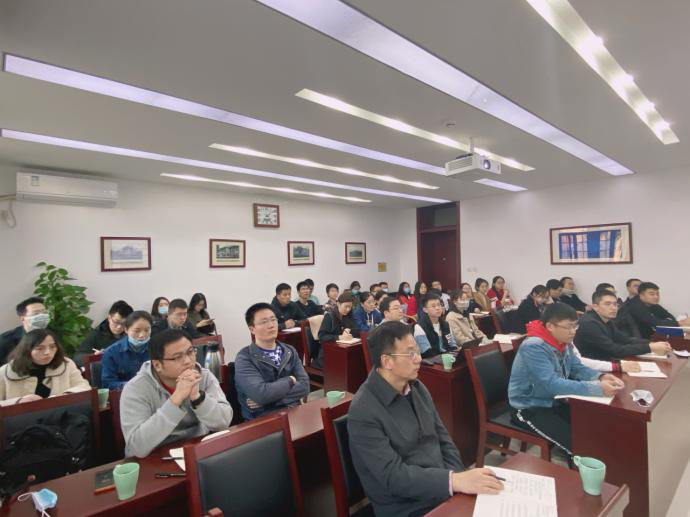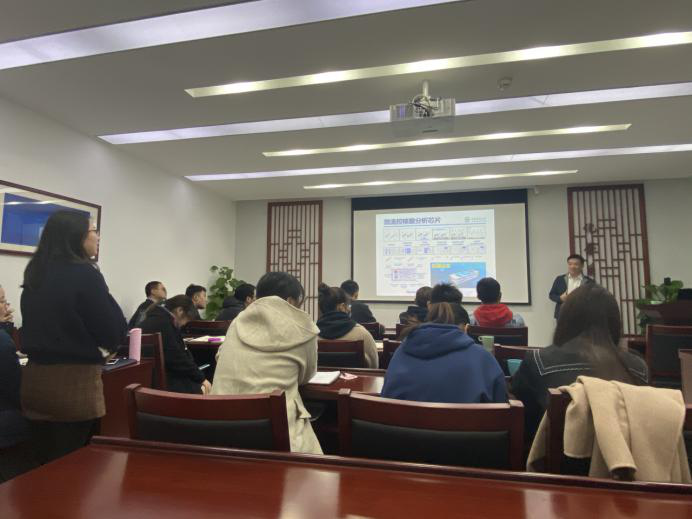
- Links
- Science China
- Analytical Chemistry
- Science
- Nature
- SCI
- ACS Journals
- RSC Journals
- Wiley InterScience
- Elesiver
- Springer Link
- Related Links
- Symposium for Cell Analysis on Micro/Nanofluidics
- 2019 China-Japan-Korea Symposium on Analytical Chemistry
- IUPAC International Congress on Analytical Chemistry (Hainan)
- International Symposium on Luminescence Spectrometry
- 国家留学网
- 中国化学会
- 清华大学化学系
Page views:1399019
Professor Lin Jianhan from China Agricultural University paid a visit and delivered an academic report on October 29, 2020
On October 29, 2020, at the invitation of Professor Lin Jinming, Professor Lin Jianhan, vice dean of School of Information and Electrical Engineering, China Agricultural University, paid a visit to our research group and delivered an academic report entitled "Application of Biosensor Technology in Agriculture and Food". The report introduces the difficulties and challenges faced by the detection of pathogenic microorganisms in the agricultural and food fields in China, as well as the overall solution of the monitoring of pathogenic microorganisms based on biosensors, which mainly includes :(1) the related research work of immunomagnetic separation for the separation and enrichment of pathogenic microorganisms; (2) Biosensor and microfluidic PCR for pathogen detection; (3) Research work related to food safety monitoring and early warning cloud platform for early warning response to pathogenic microorganism pollution.
Before the report began, Professor Lin Jianhan and his team visited the laboratory and the mass spectrometry laboratory of the Analysis Center of Tsinghua University.
In the report, Professor Lin Jianhan first introduced the research background of this report. To realize the synchronous development of new industrialization, it application, urbanization and agricultural modernization, agriculture is short legs and rural areas are weak links. There is a structural imbalance between supply and demand of some agricultural products and an extensive pattern of development. Here, Professor Lin gives an example of rising pork prices and introduces some of the major food-borne pathogens. After that, Professor Lin introduced the separation of nuclear magnetic acid and immunomagnetic flow separation technology. In terms of electrochemical biosensors, Professor Lin proposed four improvement schemes, including urease catalytic signal amplification, ion specific determination and so on. Then, he introduced the optical biosensors in detail, including fluorescence quantum dot labeling, curcumin colorimetry, mesoporous silicon encapsulated curcumin colorimetry, glucose oxidase catalyzed colorimetry, nano-gold bar etching coloration, nano-gold aggregation coloration, fluorescent microsphere labeling counting, MOF analog enzyme catalyzed colorimetry, etc. Professor Lin also introduced the microfluidic nucleic acid analysis chip. At last, Professor Lin made a summary and outlook, calling people's attention to the development of agriculture and food.

Professor Lin Jianhan in the report

Professor Lin Jianhan in the report

The teacher and the students listened carefully

Postdoc Li Nan asked questions
After the end of the report, the students actively asked questions, and Professor Lin Jianhan gave patient answers. Professor Lin jianhan's students also had some discussions with our research group.